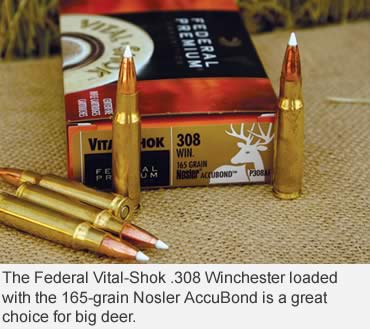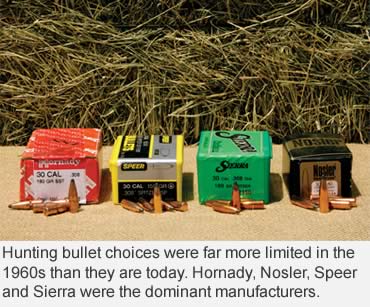Which bullets are best for whitetail hunting? Three hunting and shooting experts share their views.
Four decades ago when I was a teenager, nobody in my part of the world put a lot of thought into selecting a hunting bullet, or so it seemed. We used lightweight bullets for varmints and heavier bullets for deer.
Today, we know better, but with so many bullet types and brands on the market, choosing one can be overwhelming. Many deer hunters aren’t sure if they should use a bullet that expands quickly or one that penetrates deep. Should we get a standard soft point, a Partition, one with a bonded core or one wearing a plastic tip?
I’ve taken enough whitetails with a variety of bullets to have a firm opinion. But to keep this article from being too one-sided, I picked the brains of three experts in the hunting and shooting industries.
Federal Cartridge Co. has one of the broadest lines of hunting ammo on the market, offering cartridges with standard, premium and even super-premium bullets. Tim Brant of Federal says reliable controlled expansion, deep penetration and high weight retention are all desirable features in a projectile meant to be fired into deer.
 The public relations specialist is a firm believer in using premium bullets. When I pressed him to pick just one bullet from the Federal lineup, he didn’t hesitate in selecting the new Trophy Bonded Tip. He says it’s the best deer bullet he has ever seen.
The public relations specialist is a firm believer in using premium bullets. When I pressed him to pick just one bullet from the Federal lineup, he didn’t hesitate in selecting the new Trophy Bonded Tip. He says it’s the best deer bullet he has ever seen.
“It’s programmed for reliable expansion, gives improved accuracy over the Trophy Bonded Bear Claw, and still uses the same bonded-core technology for assured weight retention and deep penetration,” Brandt noted.
Texas shooting writer and hunting outfitter Greg Rodriguez has taken literally tons of game large, and small, worldwide. He uses premium bullets on big game when given a choice.
“I like exit wounds,” he explained. “Whether I’m hunting whitetails or wildebeest, I want a bullet that expands enough to create a nice wound channel but also is tough enough to pass through my intended quarry from any angle.”
As director of customer satisfaction for Nosler Bullets, Mike Harris is another long-experienced hunter, having shot his first deer in 1957.
Nosler determined years ago what makes a good deer bullet — one that gives rapid expansion and at least 50 percent weight retention, Harris said. The Nosler Ballistic Tip is engineered to do this.
“The only way to kill deer quickly, other than by hitting the spine, brain or breaking the animal down, is by tissue destruction, he added. “To kill a deer, you must stop blood from getting to the brain, and to do that, you must create trauma. High velocity and rapid expansion cause trauma.”
 Harris’ favorite deer cartridge is the 130-grain Nosler Partition in .270 Winchester. He says he often hunts in places so thick, a deer than runs 30 yards can be lost if it doesn’t leave a blood trail.
Harris’ favorite deer cartridge is the 130-grain Nosler Partition in .270 Winchester. He says he often hunts in places so thick, a deer than runs 30 yards can be lost if it doesn’t leave a blood trail.
We don’t have technology to make the perfect deer bullet, one that expands violently like a varmint bullet yet retains 100 percent of its weight and penetrates completely every time to leave a large exit wound. If a bullet opens up too quickly, it will not penetrate properly, making shallow, not-quickly-fatal wounds. On the other hand, if it does not open up fast enough, it will penetrate deeply without transferring energy to the target and kill more slowly. There must be a balance between penetration and bullet upset.
Also, the bullet jacket and core should stay together if the bullet is to perform as intended. If a bullet sheds its jacket, penetration is greatly reduced. A bullet must be able to perform its job over a wide range of velocity and distance. If it fails in any of these criteria it is, usually, not a good choice for big game.
There are a few bullets on the market today that work well at long range but are dismal failures at close range, where velocity is still very high. If a bullet performs beautifully at only one distance, it is a poor choice for general deer hunting. Instead, we must choose a bullet that may not be perfect for anything, but which performs adequately over a wide range of conditions.
This article was published in the October 2008 edition of Buckmasters GunHunter Magazine. Subscribe today to have GunHunter delivered to your home.